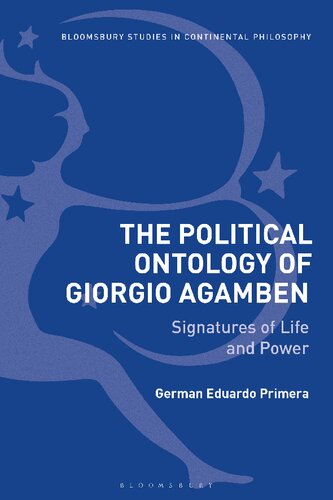
The Political Ontology of Giorgio Agamben: Signatures of Life and Power PDF
209 Pages·2019·7.435 MB·English
Most books are stored in the elastic cloud where traffic is expensive. For this reason, we have a limit on daily download.
Preview The Political Ontology of Giorgio Agamben: Signatures of Life and Power
Description:
With the publication of The Use of Bodies (2016), Agamben's multi-volume Homo Sacer project has come to an end, or to paraphrase Agamben, has been abandoned. We now have a new vantage point from which to reread Agamben's corpus; not only his method but his political and philosophical thought can been seen in a clearer light. This timely book both assesses and contributes to the debates on the Homo Sacer project in its entirety.Rethinking the notions of life and power – two of the central themes in Agamben's work – through a reconstruction of his philosophical method and an examination of his critique of Western metaphysics, this book argues that Agamben's thought cannot be fully grasped if we do not account for the intertwining of politics and ontology.This book argues that it is only by revisiting Agamben's critique of signification and metaphysics and examining his reconstruction of the archaeological method that we can understand his notions of life and power. By bringing together the two parts of the Homo Sacer project – the archaeology of the signature of Sovereignty and the archaeology of governmentality – this book provides an analysis of the production of Agambenian 'bare life'. In this sense this project re-articulates Agamben's works on signification, language and ontology with his archaeology of power.Offering an original examination of Agamben's notion of resistance, this is essential reading for any thoughtful consideration of his philosophical legacy.
See more
The list of books you might like
Most books are stored in the elastic cloud where traffic is expensive. For this reason, we have a limit on daily download.
